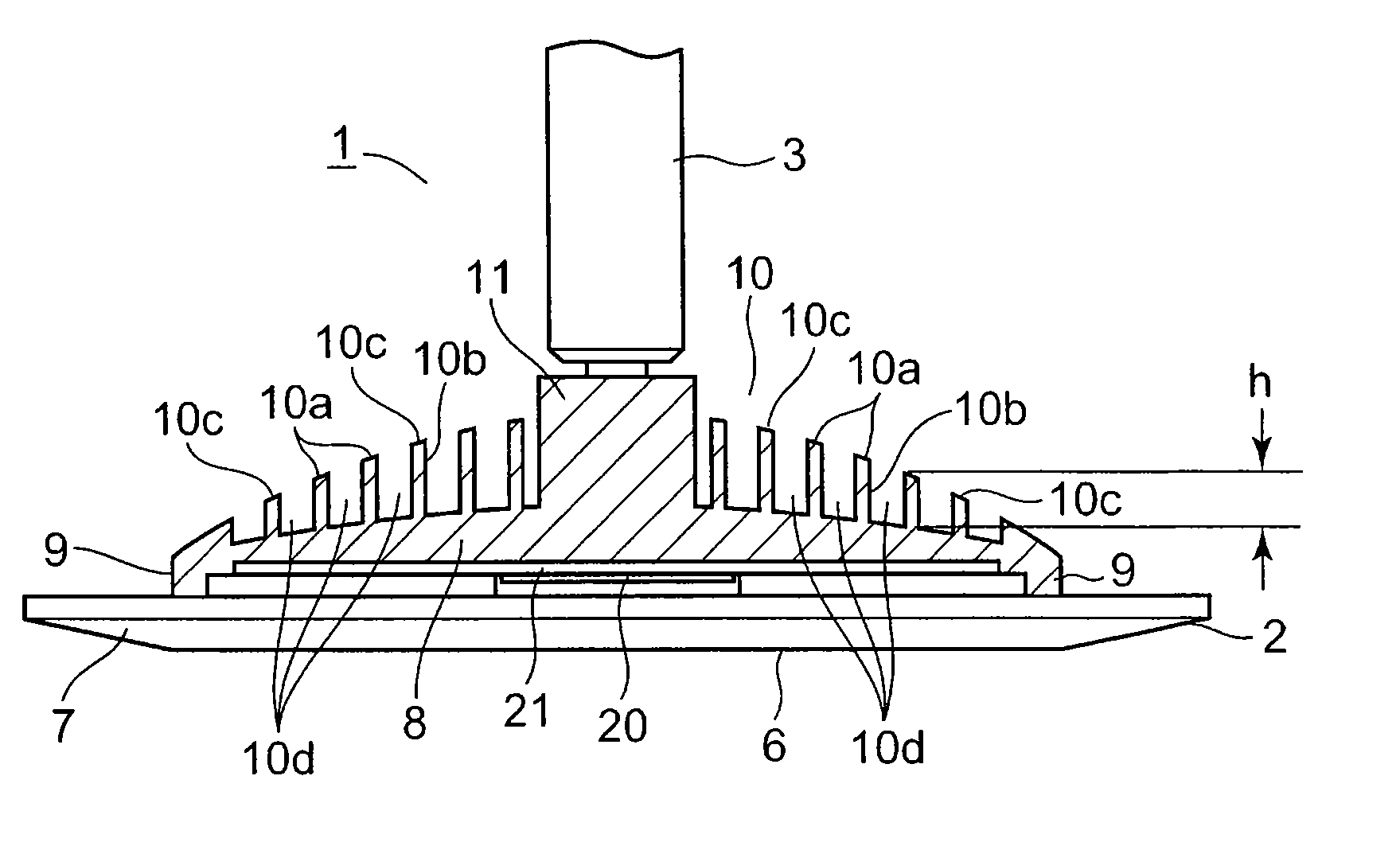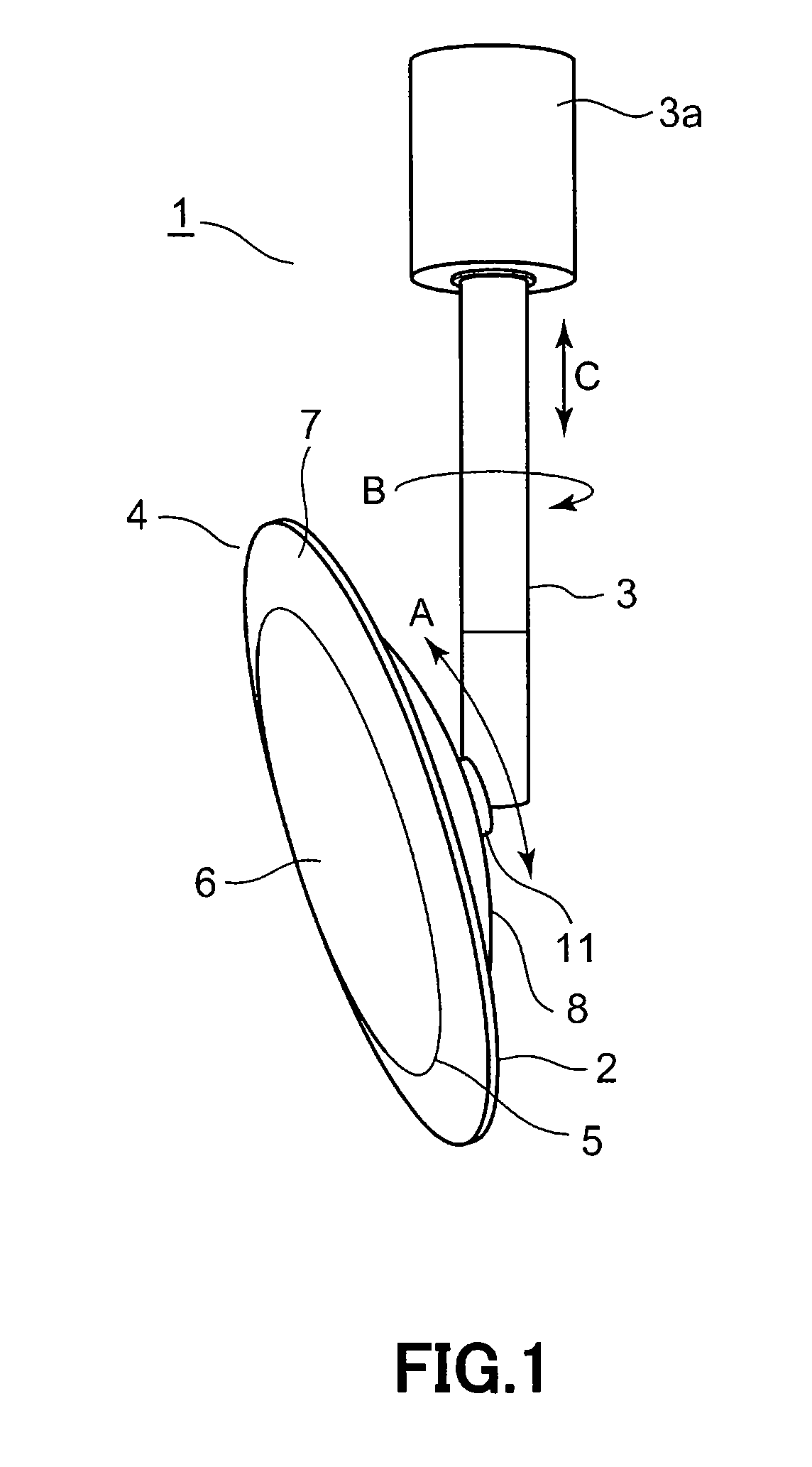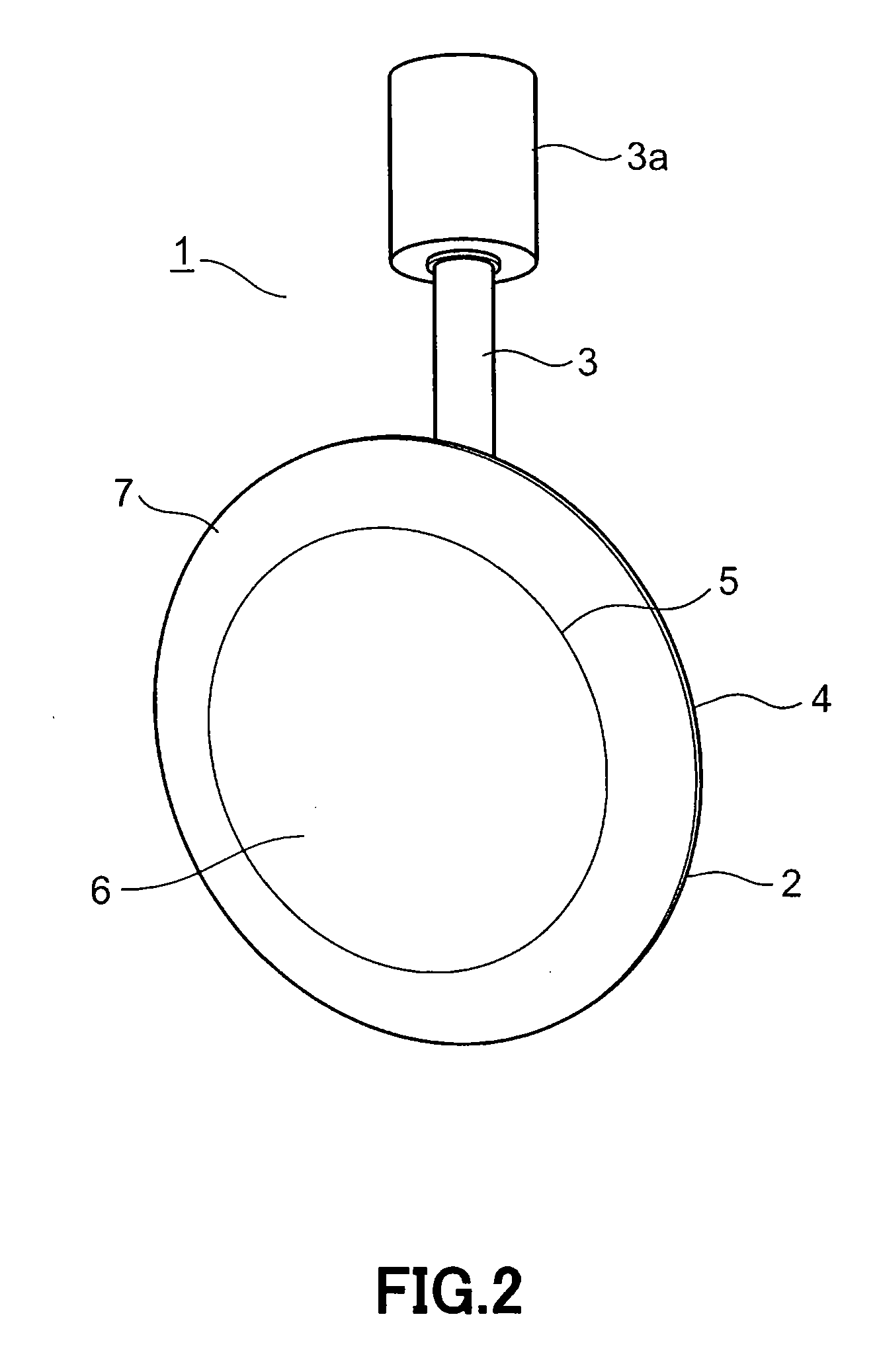Lighting system
a technology of light-emitting system and light-emitting device, which is applied in the direction of fixed installation, lighting and heating apparatus, and light-emitting support devices, etc., can solve the problems of difficult to effectively prevent the temperature of leds from rising, adversely affecting the service life, and the temperature drop of optical output. achieve the effect of reducing the degree of change in heat-radiating action
- Summary
- Abstract
- Description
- Claims
- Application Information
AI Technical Summary
Benefits of technology
Problems solved by technology
Method used
Image
Examples
embodiment 2
[0057]Next, a description is given of a lighting system of the present invention with reference to FIG. 7. FIG. 7 is a perspective view of a spotlight operating as the lighting system. Also, components that are identical to or correspond to those of the above embodiment are given the same reference numerals, and overlapping description thereof is omitted.
[0058]This embodiment differs from the above embodiment in view of a supporting structure of the main body casing 4. In the previous embodiment, a description was given of such a type in which the main body casing 4 is hung from a ceiling surface, etc., by the hanging rod 3 in use. However, this embodiment relates to such a type in which the main body casing 4 is placed in an opening portion H of a ceiling surface, etc., and both the ends of the main body casing 4 are supported so as to turn by a supporting rod 3-2.
[0059]Therefore, the elevation angle of the main body casing 4 can be adjusted, and the irradiation light can be turne...
embodiment 5
[0077]Next, a description is given of a lighting system according to the present invention with reference to FIG. 13 through FIG. 17. FIG. 13 is a side elevational view showing a spotlight as a lighting system. FIG. 14 is a side elevational view of the same spotlight, in which the angle in the elevation angle direction thereof is changed. FIG. 15 is a plan view of the same spotlight. FIG. 16 is a side elevational view schematically showing the shape of heat-radiating fins of the same spotlight. FIG. 17 is a side elevational view showing another example of the same spotlight. Also, components that are identical to or correspond to those of Embodiment 5 are given the same reference numerals, and overlapping description thereof is omitted.
[0078]This embodiment differs from previous embodiments in view of a configuration of the heat-radiating fin portion 10 at the rear side portion 8 of the main body casing 4. As shown in FIG. 13 through FIG. 16, a number of heat-radiating fins 10a, whi...
PUM
 Login to View More
Login to View More Abstract
Description
Claims
Application Information
 Login to View More
Login to View More - R&D
- Intellectual Property
- Life Sciences
- Materials
- Tech Scout
- Unparalleled Data Quality
- Higher Quality Content
- 60% Fewer Hallucinations
Browse by: Latest US Patents, China's latest patents, Technical Efficacy Thesaurus, Application Domain, Technology Topic, Popular Technical Reports.
© 2025 PatSnap. All rights reserved.Legal|Privacy policy|Modern Slavery Act Transparency Statement|Sitemap|About US| Contact US: help@patsnap.com



